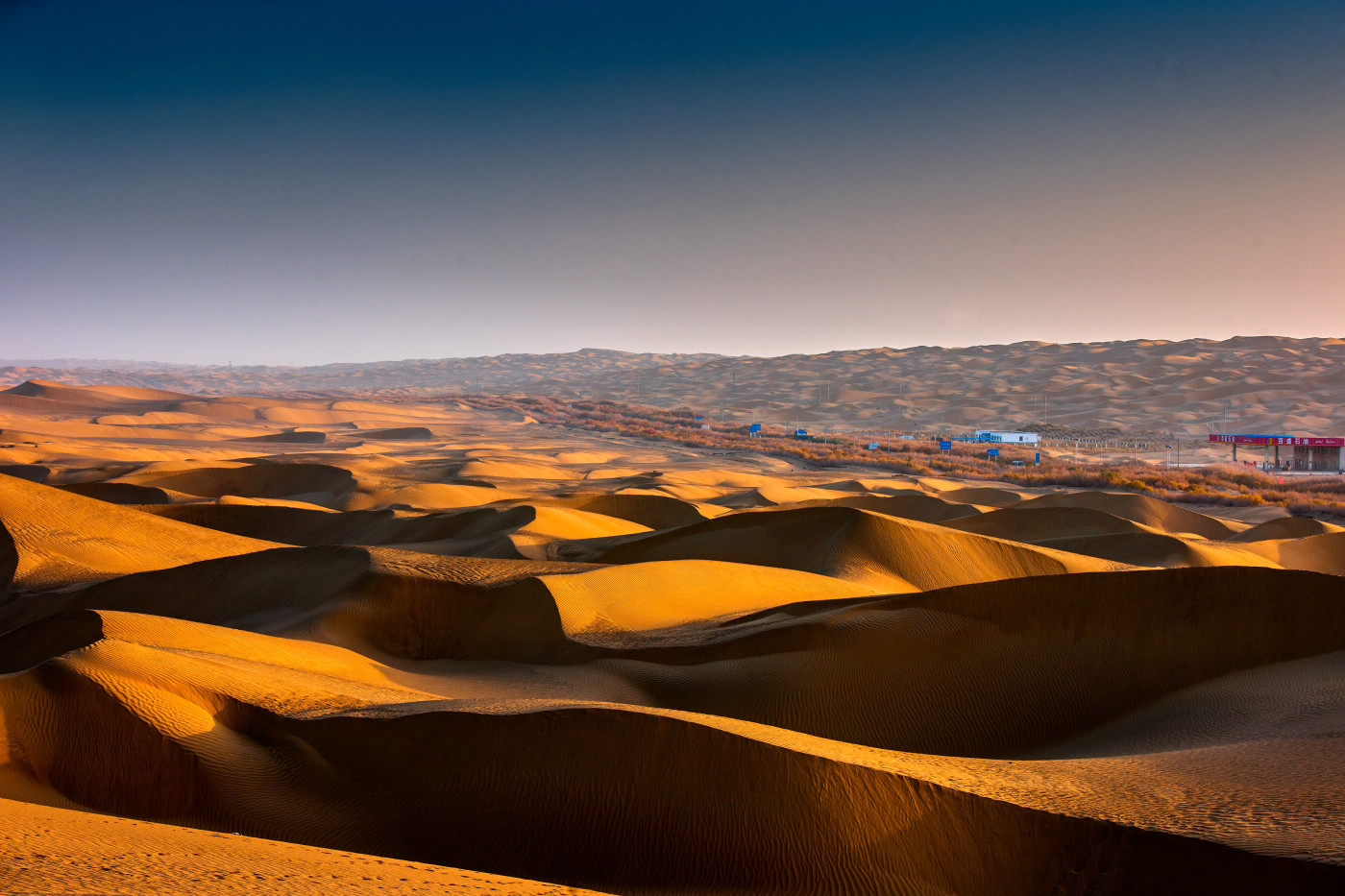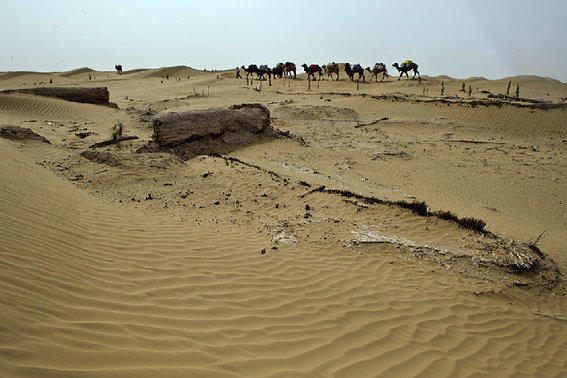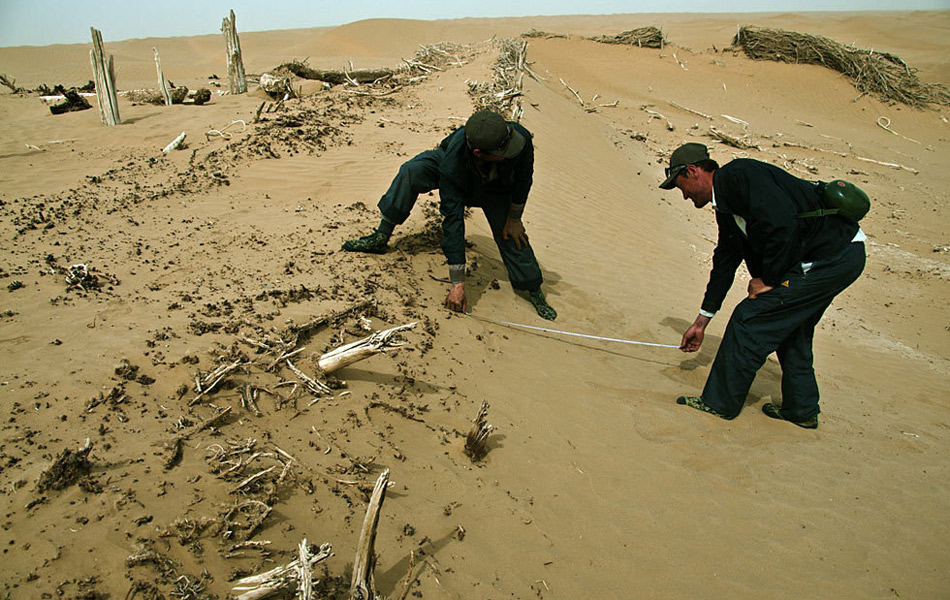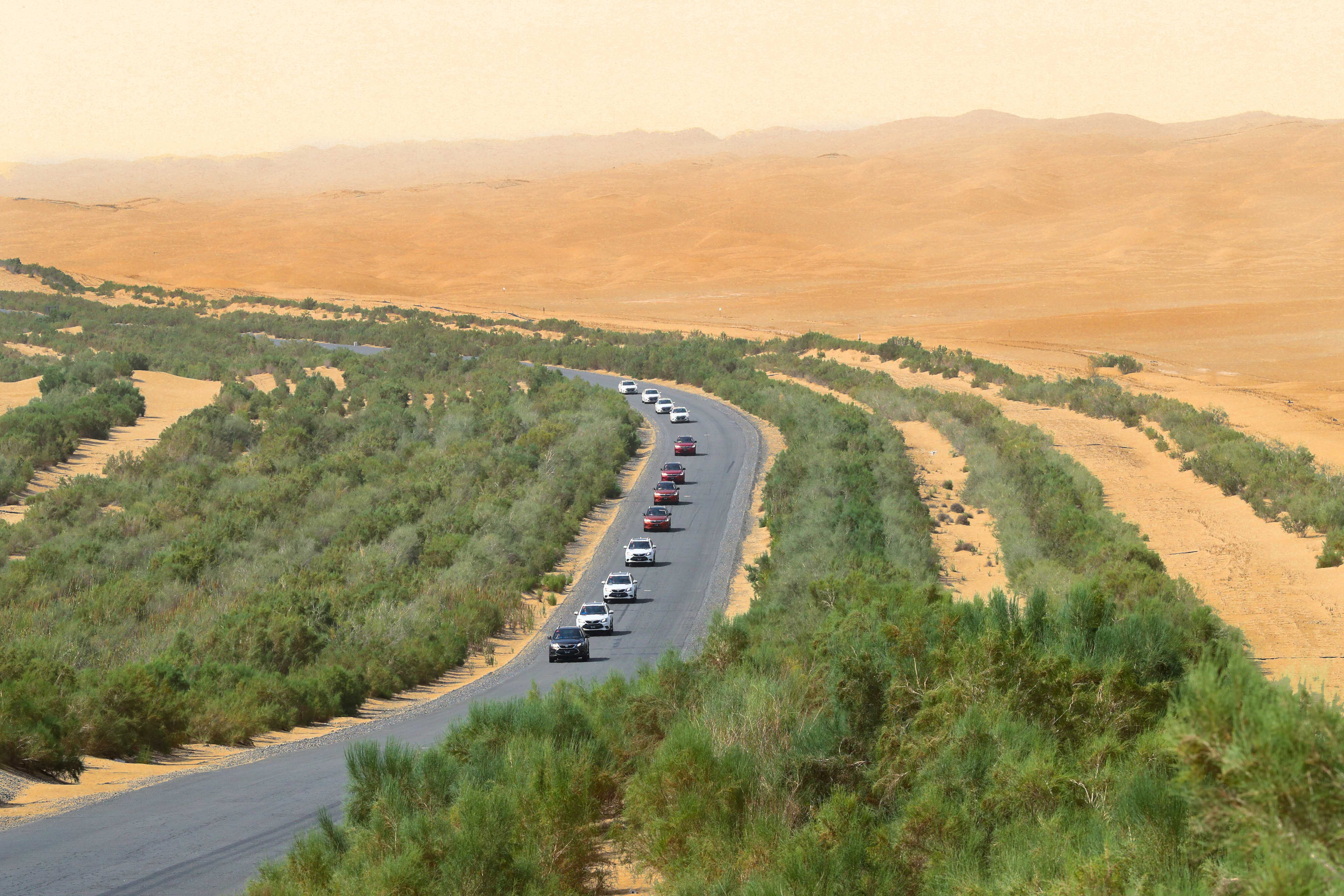Home > Attractions >
The Taklimakan Desert
The Taklimakan Desert is the largest desert in China, as well as the second largest mobile desert in the world. With a total area of 330,000 sq. km, the desert is as vast as the sea, stretching for more than 1,000 km from east to west and over 400 km from north to south. The boundless sea of sand in the desert has won it the fame as a “sea of death,” which “one can enter but will never leave,” However, in the Uygur language, “taklimakan” means the old homeland, because in ancient times the place was not a desert, but a beautiful oasis that had nurtured numerous brilliant civilizations.
Located in the center of the Tarim Basin in china’s Xinjiang Uygur Autonomous Region, the Taklimakan Desert lies in the hinterland of the Eurasian Continent, surrounded on three sides by mountains more than 4,000 meters above sea level: the Tianshan Mountains in the north, the Qinghai-Tibet Plateau in the south, and the Pamirs in the west. Rainfall is extremely rare in this region, which only has scorching sun, freezing nights and ceaseless gales.
Nevertheless, the region is not a forbidden zone for life. The surrounding high mountains, while blocking the entry of humid air, also supply pure water with their melting snow. The Hotan River, Keriya River, Niya River and Andir River--all originated from the snowy mountains and flowed across the desert. Some of them dispersed in the heartland of the desert, while others nurtured “green corridors” on the yellow sand one after another. Thanks to the existence of these great rivers, the Silk Road emerged from a “sea of death” and the desert became a land of prosperity that witnessed the exchange between several major civilizations.
The Silk Road appeared in historical records in as early as the 1st century BC during China’s Han Dynasty. With a total length of more than 70,000km, the road crossed Central Asia to link the ancient Chinese civilization with other civilizations created by the ancient Greeks, Egyptians, Babylonians and Indians. In the following centuries, these great civilizations converged in the Taklimakan Desert, proved today by the excavation of a large quantity of precious, world-stunning cultural relics.







